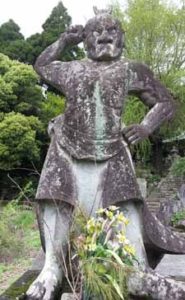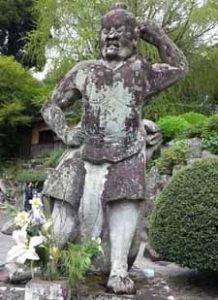by Dorothy Fizzell, SOYA, E-RYT500, IYTA
Many people wonder how I can practice both yoga and karate-do. People say “Yoga represents harmony, peace and compassion, while karate represents violence, war and intimidation.” For me, the practice of yoga and karate are complimentary and compatible. Both traditions are part of who I am, and both are integrated into every aspect of my life, every day. They are my way of life, my journey.
Do (doe), in Japanese, means “the Way”. “Do” is derived from the Buddhist Sanskrit “manga” meaning path.
In “Sword and Brush” by Dave Lowry, he says, “The Way is a journey of the mind and the spirit and, ultimately, the soul.”
Yoga has eight limbs, of which asana is one. In order to really “know” yoga, one needs to become proficient in the other seven limbs as well. One aspect of karate is the perfection of techniques used for self-defence, and for strengthening the body. However, there are other elements which must be incorporated if one is to become truly competent in karate.
In karate there are expectations and rituals to show respect and courtesy at all times, to serve each other, to take care of each other, to be humble, to persevere, to be diligent with the practice, and to practice moderation. Despite common belief, true students of karate believe in non-violence. This is Reigisaho and equates with the Yamas and Niyamas.
Breathing is critical to the practice of karate. In yoga, kundalini rests in the abdomen and is raised by controlling prana and clearing the nadis. In karate, energy, (ki), is stored in the abdomen and is the seat of the body’s power (tanden). Breathing gives life and power to posture and the movement of the body, whether one is doing yoga or karate. Proper movement will not happen without correct breathing.
In order to become skilled in karate, one needs to give much attention to the mind and how one should develop oneself. “The essence of Budo karate can trace its origin to Bodhidarma, an Indian prince and Buddhist priest who travelled to the Shaolin temple in China in the early 6th Century. He developed the “chan” philosophy (chan is zen in Japanese), saying enlightenment was sought through meditation, rather than practicing rituals or studying religious texts. He developed martial arts as a physical regiment to accompany the mental discipline of meditation.”
Karate means literally “empty hands”, usually taken to mean fighting with no other weapons other than the body. However, looking deeper, students of karate are working towards “emptying the heart and mind of all earthly desire and vanity.”
The place of practice for karate is the “Dojo”, or Way place. It is considered a sacred place, students bow before entering, never wear shoes in the Dojo, clean the floor (soji) to prepare the body and mind, and to show respect. Before training, a few minutes are spent meditating to prepare for the physical practice. The body must remain relaxed to maintain the internal connection to the “universal energy” and to correctly execute techniques and have efficient flow of motion.
Awareness of the internal experience of connection to all beings, of energy flow and control, are all essential to the perfection of both karate and yoga. Without this awareness, karate and yoga merely become the execution of physical techniques that are missing the “Truth” or meaning.
Samurai warriors used two sounds that were sacred in their practice – “Aa” and “Mm”, or Aum in Yoga.
This is the entrance to Musashi’s cave near Kumamoto. Musashi was a famous Samurai who wrote “The Book of Five Rings” (earth, water, fire, air, and ether). These match with the elements of the first five chakras.
The mantra used in the Chito Ryu style of karate:
We who study Chito Ryu Karate Do,
Shall always remember the Spirit of the Samurai,
With Harmony, Dedication and Smart Work,
We shall reach our goals.
Similarly, in yoga we have a sacred mantra used by SOYA yoga and many other traditions:
Loka Samasta Sukhino Bhavantu
May the whole world attain peace and harmony.
Two physical practices, two paths, and each of them moving towards the Truth or realizing the Self. Namaste
D orothy Fizzell is passionate about her yoga and karate. She has been practicing yoga since the late 1970’s and trained as a SOYA yoga teacher in 1995-1996. Dorothy is a lead trainer for the SOYA teacher training program in Vancouver (Surrey), which is held each fall from September to December.
orothy Fizzell is passionate about her yoga and karate. She has been practicing yoga since the late 1970’s and trained as a SOYA yoga teacher in 1995-1996. Dorothy is a lead trainer for the SOYA teacher training program in Vancouver (Surrey), which is held each fall from September to December.




Recent Comments